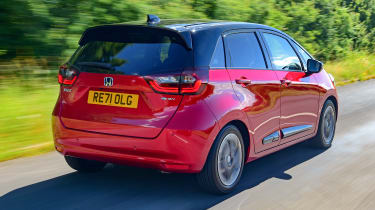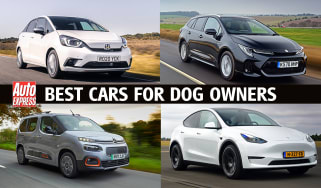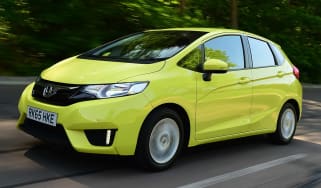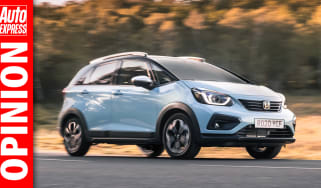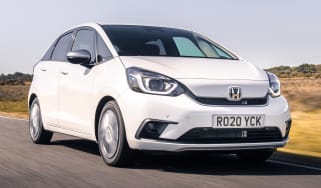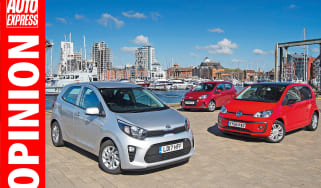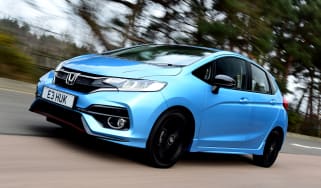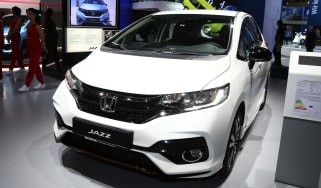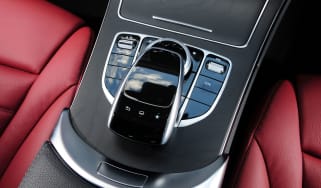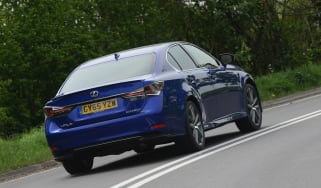Honda Jazz review
Practical, efficient and highly-specced, the hybrid Jazz supermini is an attractive if relatively pricey package

PCP finance available
Honda continues to try and make the Jazz supermini relevant to younger customers. The fourth-generation car aims to attract buyers interested in better fuel economy, up-to-date connectivity and reasonable running costs. Does it succeed? In part, yes: it’s super-efficient, furnished with new infotainment tech and should hold its value well.
On the downside, the Jazz is still a boxy, uninspiring shape and lacks the fun factor other rivals offer. However, the hybrid powertrain is impressive, and if you prioritise practicality over style it could be the right choice. Just remember to drive a hard bargain at the dealership on those high list prices.
About the Honda Jazz
The Honda Jazz has been around since 2002 in the UK, and over the intervening years its mix of practicality, reliability and low running costs has won a loyal band of repeat customers, who will swear by all of the unassuming supermini’s aforementioned characteristics.
All well and good, but the Jazz’s unassuming nature has made it hard to reach customers outside the group of buyers of a certain age and outlook who have traditionally homed in on the little Honda’s common-sense qualities.
The latest model introduced in 2020 is the fourth generation, and whereas in Japan it’s available with 1.3-litre petrol or 1.5-litre petrol-hybrid power, here in Europe we’ve so far been offered only the 1.5-litre e:HEV variant. That decision is in line with Honda’s stated intention to eliminate conventional powertrains from its European line-up – something it has nearly achieved, with the Civic Type-R the sole petrol-only model in the Honda range – so don’t hold your breath for a cheaper petrol version here.
More reviews
Car group tests
In-depth reviews
Road tests
- New Honda Jazz EX Style 2022 review
- New Honda Jazz Crosstar 2020 review
- New Honda Jazz 2020 review
- New Honda Jazz Sport 2018 review
Used car tests
Honda’s i-MMD (Intelligent Multi Mode Drive) hybrid set-up is similar to that employed by Toyota in its rival Yaris supermini, consisting of a four-cylinder petrol engine and a pair of electric motors all linked to a CVT auto transmission. Like the Toyota, and in contrast to the Ford Fiesta mild-hybrid, the Honda system does allow for brief periods of electric-only driving – up to a mile, in fact.
While clever hybrid tech means it’s clearly more interesting from an environmental perspective, the Jazz still has its work cut out to catch the attention of those supermini buyers who want to drive something a little more fun or funky. The Jazz’s roster of rivals is an impressively long list of high quality competitors that includes big names such as the Ford Fiesta, Vauxhall Corsa and Renault Clio, a trio of VW Group stablemates in the VW Polo, SEAT Ibiza and Skoda Fabia, and a far from motley assortment of others – the Peugeot 208, Mazda 2 and Hyundai i20 to name a few.
The Jazz comes to the fight with relatively snazzy - for a Jazz - styling, and attractive equipment levels across four model grades. The old system of SE, SR, EX and EX Style is out, replaced by the more upscale-sounding Elegance, Advance, and Advance Sport, along with the Crosstar Advance. The new model lines have brought with them an increase in equipment too, especially for the entry-level car, which now gets 15-inch alloy wheels and a 9-inch touchscreen with Apple CarPlay and Android Auto as standard, though you still miss out on equipment like keyless entry and a heated steering wheel granted to the rest of the range.
Models from the Advance upwards also get a 9-inch Garmin navigation module in place of the standard Honda touchscreen, privacy glass, larger 16-inch alloy wheels. The Advance Sport adds to this with sport-inspired details to its body styling, a special exhaust finisher, ultrasuede interior trim, sports pedals, a three-spoke steering wheel, and a Sport drive mode, though the powertrain remains the same.
Honda introduced the Jazz Crosstar model in mid-2020 to sit alongside the regular five-door hatchback, and above it in stature, thanks to its raised ride height, body cladding and roof rails for a pseudo-4x4 look, although don’t expect any off-road ability. Only available in Advance trim, it’s more expensive than the regular car, less efficient and the luggage capacity is also reduced by six litres. In our opinion, it’s out of step with the overall ethos of the Jazz, but it may go down a storm with the Jazz's fan base.
For an alternative review of the Honda Jazz, visit our sister site carbuyer.co.uk...

